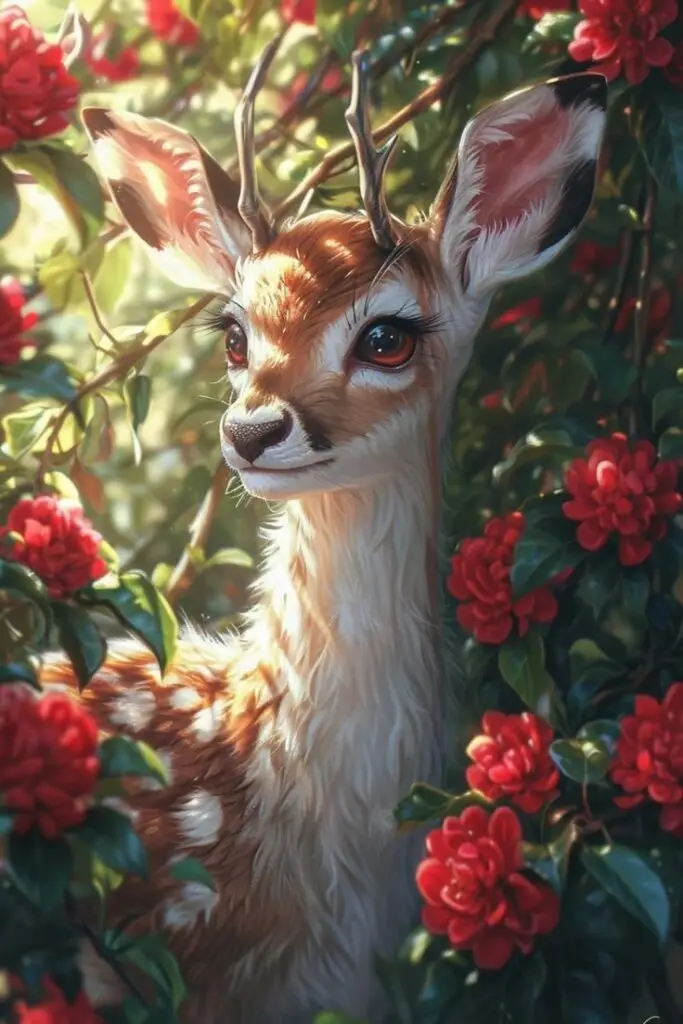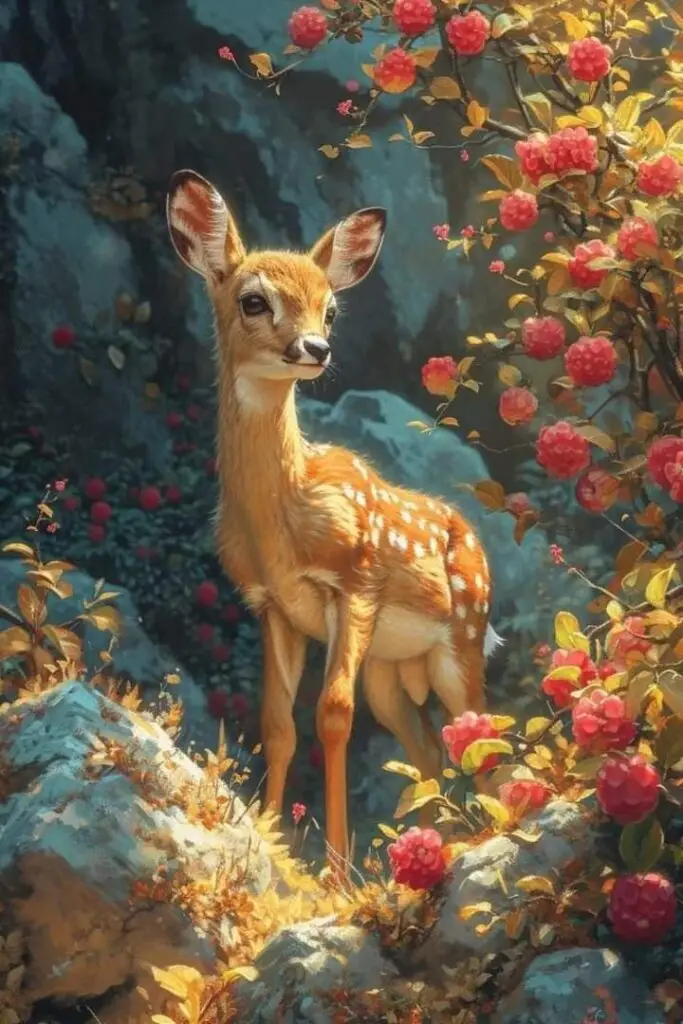Drawing deer can be a rewarding experience that enhances your artistic skills. By understanding the anatomy of deer and mastering both basic and advanced techniques, you can create realistic and expressive representations of these graceful animals. Whether you’re an aspiring artist or looking to refine your skills, this guide offers essential tips and insights to elevate your deer drawings.
As you embark on this creative endeavor, you’ll discover helpful resources that support your journey. With step-by-step instructions and illustrations, you will be equipped to tackle deer drawing with confidence. Engaging with the unique features of deer will inspire your creative process and improve your overall technique.


Key Takeaways
- Familiarize yourself with deer anatomy for accurate representation.
- Start with basic techniques before exploring more advanced approaches.
- Utilize available resources for continuous improvement in your art.
Understanding Deer Anatomy
A thorough grasp of deer anatomy is essential when you aim to draw a realistic representation. Key aspects include their bone structure, muscle groups, and specific features that define their proportions.
Bone Structure and Muscle Groups
Deer have a unique skeletal structure adapted for agility and endurance. Their bones, particularly the long legs, allow for swift movement in various terrains. Here are the main components:
- Skull: Houses the brain and supports antlers in males.
- Spine: Helps maintain posture and flexibility.
- Limbs: Long femurs and a robust pelvic structure support running.
Muscle groups play a crucial role in locomotion. Key muscles include:
- Shoulder and Forelimb Muscles: Enable strong, forward movement.
- Hind Leg Muscles: Power jumps and swift direction changes.
When drawing a deer, pay attention to how these muscles are positioned and how they interact with bone structure.
Key Features and Proportions
Understanding deer proportions will enhance your drawing accuracy. Key features to focus on include:
- Head: Proportionally smaller than the body, with a distinct muzzle.
- Neck: Short but muscular, connecting the head with the shoulders.
- Body: Sleek and elongated, with well-defined hindquarters.
Remember the proportion ratios: the length of the deer’s body is typically about 1.5 times the length of its legs.
Consider the placement of the eyes; they are located more toward the sides of the head, enhancing peripheral vision.
When you draw, emphasize these characteristics to achieve a lifelike portrayal.


Deer Drawing Basics
Understanding the fundamental elements of deer drawing will enhance your skills and make the process more enjoyable. Focus on the materials, the initial sketch, and the details to bring your artwork to life.
Materials and Tools
Selecting the right materials is essential for a successful deer drawing. Here is a list of basic tools you should consider:
- Pencils: Use a range from H (hard) to B (soft) for different lines.
- Eraser: A kneaded eraser is ideal for precise corrections.
- Paper: A smooth, heavyweight paper allows for better pencil control.
- Blending Stumps: These help smooth out pencil strokes for a realistic texture.
You may also consider colored pencils or watercolors for adding tones and colors. Experiment with different brands to find what works best for you.
Sketching the Basic Outline
Begin by lightly sketching the basic shapes that form the deer’s body. Start with a rough outline using simple shapes:
- Head: Draw an oval for the head.
- Body: Use a larger rectangle or oval.
- Legs: Sketch thin rectangles for the legs.
- Antlers: If your deer is male, outline the basic shape of the antlers.
Connect these shapes slowly, keeping proportions in mind. Refine the outline to include curves that resemble the deer’s natural form.
Adding Details and Textures
Once the outline is complete, focus on adding details. Pay attention to the following areas:
- Facial Features: Include the eyes, nostrils, and mouth for expression.
- Fur Texture: Use short, quick strokes to imitate the deer’s fur.
- Antlers: Add branches and texture, making them dynamic and realistic.
Shading is crucial for depth. Observe light sources, and add darker areas where shadows form. Blend to achieve a smoother transition between light and dark parts. Experiment with layering techniques to create a fuller appearance.


Advanced Deer Drawing Techniques
Mastering advanced techniques in deer drawing enhances your ability to create lifelike representations. Focusing on light, shadow, and background can elevate your artwork significantly.
Rendering Light and Shadow
Understanding light and shadow is crucial for adding depth to your deer drawings. Start by determining the light source. This will guide where the highlights and shadows fall.
- Highlight Areas: Use a lighter shade to indicate where the light hits the deer. Areas like the nose, ears, and the tops of legs often receive more light.
- Shadow Placement: Darker shades should be applied under the belly, inside the ears, and behind the legs. Use a blending technique to ensure smooth transitions.
Consider watching tutorial videos that demonstrate these techniques in action. Observing different styles can provide insight into managing light effectively.
Incorporating Background Elements
A well-designed background can complement your deer and provide context. This can create a more immersive scene.
- Choose Appropriate Scenery: Think of natural habitats like forests, grasslands, or meadows. Decide how much detail to include based on your focus on the deer.
- Layering: Start with lighter colors for distant elements and progressively add darker tones for those closer to the viewer.
Integrating background elements can also enhance the story of your artwork. Explore videos showcasing different approaches to backgrounds for inspiration on composition and style.
References and Resources for Artists
Accessing high-quality resources is essential for enhancing your deer drawing skills. Utilizing stock photos and vectors offers reference material, while 360° panoramic images can provide depth and context.
Utilizing Stock Photos and Vectors
Stock photos are a valuable resource for artists. Websites like Shutterstock, Adobe Stock, and Unsplash offer a variety of images that can be used as references for deer anatomy and surroundings.
When searching for images, try using specific keywords such as “white-tailed deer” or “deer in nature.”
Vectors are another useful tool. They allow you to explore shapes and forms without worrying about resolution. Websites like Freepik and Vecteezy provide free and paid options.
Exploring 360° Panoramic Images
360° panoramic images offer a unique view of environments where deer are found. They allow you to observe the deer in their habitats, enhancing your understanding of their surroundings.
Platforms like Google Street View or 360 Cities give you access to these immersive images. You can rotate and zoom in to capture details that can inspire your artwork.
Using these resources can improve your ability to depict deer accurately in various settings.
- 42shares
- Facebook0
- Pinterest42
- Twitter0


